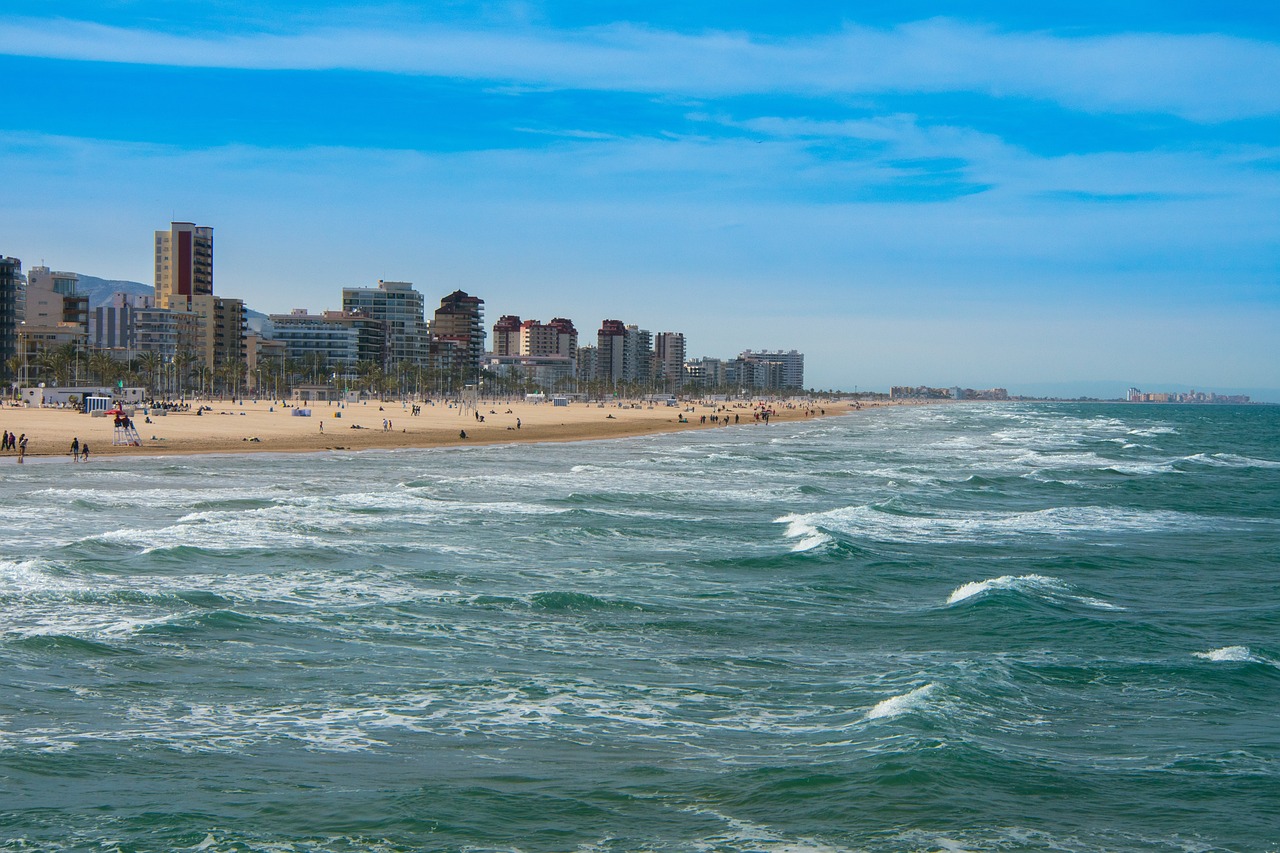The train pulled into Gandia, all metallic screech and tired-looking passengers, and there they were. My parents, standing on the platform, waving like I’d just won an Olympic medal.
First thing my mom said? Not “How was your flight?” Not “How are you?”
She went straight for the real questions: “How many boards did you bring?”
“Just the essentials,” I grinned, even though my bags were a disaster.
Gandia isn’t exactly a surf hotspot. It’s got beaches, yeah, but the kind where people sunbathe and sip sangria—not the kind where they duck-dive into a six-foot set. It’s not my scene, but it’s where my parents landed, so here I am. Adjusting. Sort of.
That first morning, I paddled out to see what Gandia had to offer. Small swells, lazy peaks. The kind of waves that forgive you when you screw up. A reset. Back to basics. Paddle. Pop-up. Glide.
And my dad? Trying to surf.
Picture a man in his sixties, determined, grinning like a kid, wobbling his way through whitewash. “Bend your knees, Dad! Lower!” He didn’t stand for long, but when he wiped out, he came up laughing, which is half the battle.
That’s the thing about surfing. Even when you suck, it gives you something back.
Mundaka: A Different Beast
Gandia was warm-up. Mundaka was the real deal.
I’d been dreaming of this one for years—a legendary left-hand barrel, the kind that doesn’t care how good you think you are.
The train ride was long. My backpack felt heavier by the hour. At some point, I may have traumatized an elderly couple trying to shove my board bag into an overhead compartment.
But then—Mundaka.
Tiny Basque fishing village. Narrow, winding streets. That smell of salt and wood smoke in the air. And beyond it? The wave.
Mundaka isn’t a place where you just show up and own it. The current is gnarly. The takeoff zone is crowded and cutthroat. The locals have zero tolerance for clueless kooks.
I spent more time fighting for position than actually surfing. Just trying to read the wave, feel the pulse of it, earn my place in the lineup.
And then—finally—a wave came to me.
A clean left. The kind that sucks you in and spits you out grinning.
For a few seconds, it was just me and the ocean. That perfect weightless feeling, the water folding over like a moving tunnel, the world going quiet inside the wave.
By the time I staggered back to my rented room that night, arms screaming, brain buzzing, I called Marisol.
“Guess who just surfed Mundaka?”
“NO WAY.”
Her laugh crackled through the speaker—half joy, half jealousy. “You’re actually living the dream.”
“Meanwhile,” she sighed, “I’m stuck here measuring barnacles.”
We both laughed. But there it was—that ache. The distance. The timezone nonsense. The missing someone even when you’re where you’re supposed to be.
What’s Next?
Mundaka set the tone. Spain isn’t just a surf trip—it’s a fight for waves, a lesson in patience, a challenge I didn’t know I needed.
I don’t know where this all leads yet. More waves. More places. More wiping out and getting back up.
But as a surfer, as a GME holder, I’ll keep going.

